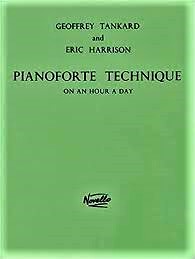 This week we are talking about technique. There are very many books talking about all the various aspects of piano technique, there are also many 1000’s of words written on the internet as well.
This week we are talking about technique. There are very many books talking about all the various aspects of piano technique, there are also many 1000’s of words written on the internet as well.
What is technique? Technique is simply the ability to execute the very many different piano passages, a combination of many skills coming together and not necessarily just about dexterity. These skills are acquired by learning how fingers and arms etc are to be moved and getting the brain and muscles to operate these with ease and control. When practicing technique well and learning the piano correctly, the reality is that you are actually improving your brain. There are many benefits, success at school, stronger ability to cope with everyday problems and the ability to retain memory longer as you age.
To acquire good technique one needs to dedicate significant amount of time but beware, once your fingers have become more skillful it doesn’t necessarily mean you can play everything straight away. Every new piece of music is a new adventure and must be learned anew.
Let’s focus on one aspect of technique. The use of fingers 4 and 5. These are traditionally viewed as the weaker fingers, but this is not necessarily the case, they have a strength and quality of their own. Conventional scale playing makes very little use of the 4th and 5th fingers and as a result they remain undeveloped. Added to this is the fact that the 3rd and 4th fingers share tendons which also restricts mobility.
How can we get around this? There are piano players who recommend awkward position changes in order to avoid using fingers 4 and 5. There are moments where this can be a good idea if a passage requires louder or stronger sounds but in softer passages the gentler quality of those weaker fingers can add something to the music.
There have been hundreds of exercises written which can be used to develop all the fingers. For younger players the Dozen a Day books offers a great introduction to technical exercises. For students of around grade 5, Hanon’s The Virtuoso Pianist is a treasure trove of exercises. If you’re a more advance pianist Geoffrey Tankard & Eric Harrison’s Pianoforte Technique on an hour a day is very good. Czerny’s 101 Exercises , Op. 261 are much admired.
Hanon exercises which are useful for helping those 4th and 5th fingers are, numbers 1, 4 and 5. When playing these make sure your wrists are free and relaxed. Play slowly and quietly at first aiming for a sense of ease in your playing before building speed and volume. Eventually experiment with them and play in different keys and rhythms.
Exercises can open a route to better playing over a period of time, they are not a quick fix but a gradual and satisfying evolution.



Add Comment